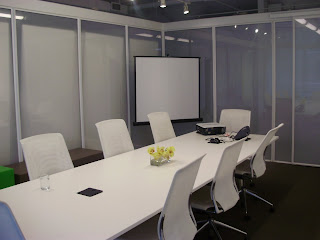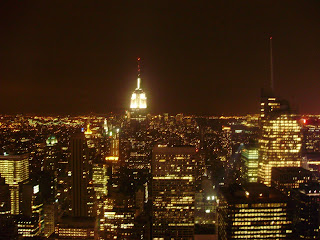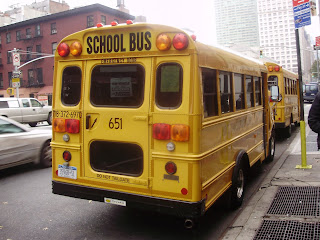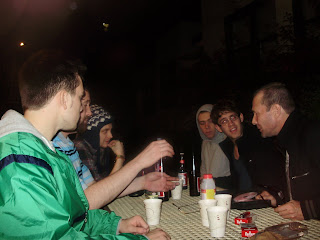
Search This Blog
Monday 30 November 2009
Saturday 28 November 2009
AOL becomes Aol. Wolff Olins Rebrand

Wolff Olins New York has created a new identity for one of the internet's pioneering (but now ailing) brands, AOL
The brand, which introduced millions to the wonders of the world wide web, has struggled to stay relevant in recent years. A New York Times report reveals that AOL chairman and chief executive Tim Armstrong even considered dumping the AOL name altogether as it prepares to be spun off from Time Warner.
Instead, he asked Wolff Olins in New York to help turn it around. Wolff Olins' solution involves using a set of hundreds of different backgrounds to sit behind the new mark in which AOL is written Aol. (don't forget the full-stop).
Its use of interchangeable imagery is a similar approach to that employed by WO for New York whereby the basic logo could be filled with various images to add freshness, while the goldfish is somewhat reminiscent of a piece of work by one of WO's founders - Michael Wolff's logo for The Consortium.
Dave Sedgwick Lecture



A couple of weeks ago Dave Sedgwick, of 999 Design, came into college to talk about his experience in the design industry. The talk was about his journey through design, his advice on getting a job and also a portfolio of his work.
Thursday 26 November 2009
Mike Rigby - Words of Wisdom

Mike's talk was advertised by posters put up around the design department recently featuring the word WOW which since the talk I have realised means Words of Wisdom. The date on these was 26th October which was wrong as it was meant to say November. Then someone designed a poster that said D'oh in place of Wow with the correct date on. These were placed next to the ones with the incorrect date on. I don't understand why you would want to highlight someones mistake and it makes a mockery out of that person. It could quite easily have been reprinted with the correct date on.
Wednesday 25 November 2009
One Minute Brief- Chest of Drawers Poster
Design Solution Before Seeing the Brief



Recently, after having the idea for the 1 minute briefs, I had another idea which also had to be completed in one minute.
Tuesday 24 November 2009
Fergal Kilroy Talk

Last week, Fergal Kilroy D&AD Student Award Manager, came in to speak to us at the college. D&AD was set up 47 years ago in 1962 to promote creativity in design and advertising.
Mike Carter Workshop - Orchard


Monday 16 November 2009
Changing Faces of New York Poster

I decided to make a feature out of all the funny face pictures we took on the first night of New York by making a poster out of them. I was going to just do it in squares but they resembled windows so I decided to create an abstract skyline and put in a background of Times Square. With more time it could be a nice piece of work.
Sunday 15 November 2009
Wolff Olins Agency Visit - New York





As with AKQA, Wolff Olins was on the 10th floor of a modern building. It had a clean white reception that led off 3 different ways. The white was broken up by some of their colourful work. I noticed that some of it was the NYC branding that I had been seeing around the city previously.
AKQA Agency Visit - New York



AKQA's agency was up on the 10th floor of a really nice modern building. When leaving the lift we we stepped into a huge contemporary reception area where we were invited to sit whilst we waited for Barbara, the woman we had arranged to see. She came over with a laptop and we went into a small room with sofas and chairs in it.
Method Agency Visit - New York




The visit to Method was quite a late one at 5pm so we were very tired when we arrived as we had crammed a lot into the day before we arrived but we got there in good time and went up to floor 5. The entrance to the building looked very old and was just a stairwell and lift. Not what you expected from a design agency. However it is this that adds a bit of character to the very clean white nature of most agencies. The actual agency was much cleaner with fresh decor but a lot of the character remained with painted brick walls and exposed beams on the ceiling. They were also in the process of doing up their office.
Siegel + Gale Agency Visit - New York








We arrived in good time to see Siegel + Gale which was situated in an office block which didn't look very modern. Once we got to their floor and into their reception we saw how modern this place was. It was all white with white net curtains that created a fresh yet warm ambience.
New York Video
New York Trip










Last Monday most of us students from the Visual Arts courses went away to New York for the week. In the past we have been to Berlin and Barcelona so I jumped at the chance to visit such an amazing place as New York even though I am struggling for money at the moment. I just cannot understand why people pass up the opportunity to experience things like this.
Friday 6 November 2009
Magnetic North Website










After my Portfolio visit with Magnetic North I decided to check out their website. It is a very unusual approach and highly interactive with the user. This is good as it is meant to be an interactive agency. You basically draw your own website on the screen. You will probably never see the same screen on the website twice and you can pick and choose what you want to look at on the site. Rather than standard tabs and buttons it makes you work and keeps you entertained.




